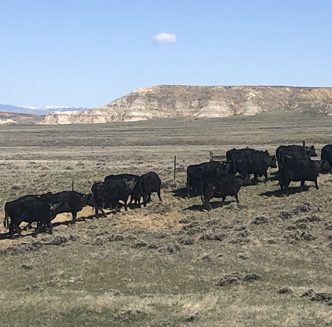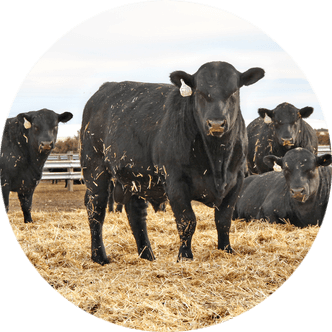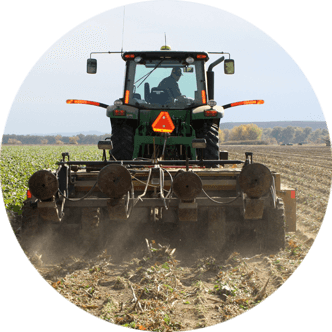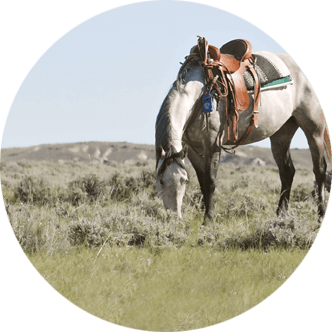Canada Thistle: The Perennial Pest
By Amy Smith, UW Extension Educator
Canada thistle, Cirsium arvense L., is an introduced, creeping perennial native to southeastern Europe and the Mediterranean region. It was introduced to North America between the 17th and 19th centuries by contamination of ship ballast.
Since its introduction, Canada thistle has adapted to a wide range of habitats including abandoned sites, ditches, crops, pastures, rangeland and roadsides, as well as non-crop areas.
An established Canada thistle population will displace native plant species, reduce pasture and rangeland quality and reduce crop yields. Significant Canada thistle populations will decrease productivity of pastures and rangelands as livestock will actively avoid grazing around the spiny foliage and may cause cuts or abrasions leading to active infections.
Canada thistle may cause additional economic damage by playing host to agricultural insect pests and diseases such as the sod-web worm, bean aphid, stalk borer and cucumber mosaic virus.
Description
Canada thistle is a spiny, creeping perennial forb. Its erect stems reach an average height of two to five feet tall, which are often smooth – spineless – or may have shallow lengthwise lines.
The stems die back each winter and new shoots form from established basal roots.
Canada thistle has an extensive fibrous root system which will spread laterally 12 to 18 feet and can reach depths of six to 15 feet, making control difficult.
The plant has dark green, alternate lobed leaves six to eight inches long and approximately one to 1.5 inches wide.
Emergence, reproduction and spread
Plant flowering is stimulated by 14- to 16-hour days and produces purple, pink- or white-colored flower clusters found at the end of stems and branches from May through August.
Canada thistles grow in circular patches – usually clones or plants of a single sex – meaning male and females flowers grow on separate plants.
The female plants produce a sweet smell, attracting insects which will pollinate separate male and female patches up to 200 feet apart.
Each branch can produce 1,000 to 1,500 small tan to dark brown seeds. The seeds – called achenes – have an apparatus called a pappus, which is a tuft of hair aiding in seed dispersal.
Canada thistle seeds utilize a variety of successful dispersal methods such as wind, water, livestock, wildlife, equipment or humans, and it has a very high germination rate. The seeds held within the soil profile can be viable for 20 to 22 years.
The plants use seed production to colonize new locations, whereas asexual reproduction is used to continually grow in its current location. Given the opportunity, Canada thistle will reproduce asexually by rhizomes – modified stems which grow horizontally underground – rather than by seed, as it requires less plant energy.
Regardless of the reproductive method, both pathways produce new rosettes in mid- to late-spring, with the potential of a second germination and/or growth period in fall with adequate moisture.
Seeds found within the top three inches of the soil can germinate, grow and reproduce asexually seven to eight weeks after initial germination, thus causing significant management issues.
Habitat
Canada thistle is found on all continents except for Antarctica. It thrives in all habitats.
However, it is quick to establish in disturbed locations and is known to colonize crops, pastures, rangelands, roadsides, ditches, canal banks, riparian areas, forests, gardens and lawns.
Canada thistle will also invade healthy, undisturbed locations, outcompeting or displacing desirable forbs and grasses using allelopathic chemicals. Allelopathy is when a plant exudes a self-produced chemical which inhibits the growth of neighboring plants, resulting in lower biodiversity, forage production or crop yields.
Management
The Wyoming Weed and Pest Council lists Canada thistle as a statewide noxious weed, indicating the negative impact of Canada thistle found across the state.
Although prevention is the best management tool, maintaining a healthy pasture and rangeland environment including diverse grass and forb species, as well as utilizing appropriate stocking and grazing techniques for livestock will reduce the likelihood Canada thistle will become established.
Prevention should be the goal to reduce establishment of any new weed, noxious or not.
Early Detection and Rapid Response is a process used to identify newly invasive species prior to or right as establishment occurs when the species is easily controlled or eradicated.
Actively scouting, monitoring and identifying new species are key factors which should be in all management plans, as most invasive species become established quickly, including Canada thistle.
As with most problematic species, an Integrated Pest Management approach is best, as it utilizes multiple control strategies, reducing the potential for resistance.
Canada thistle is adept at overcoming control methods because of its extensive root system. Therefore, one key strategy is to simply stress the plant, forcing it to use nutrient reserves stored in the roots.
Control of an established Canada thistle patch is a long, slow process which may require multiple years before full control is achieved.
Mechanical control
Mowing established Canada thistle patches can be an effective measure to reduce seed production when completed prior to flowering and repeated monthly for multiple growing seasons.
However, mowing combined with herbicide applications is a more effective control strategy.
The mowing and herbicide combination is successful as the plants utilize stored nutrients for growth of new shoots after each application.
Cultural control
Neither grazing nor prescribed burns have shown to be an effective control of Canada thistle.
Although, when used in combination with other control methods, these may provide a level of control.
Biological control
There are biological measures available for controlling Canada thistle. However, when biological control agents are used to control plant species, they will not completely control or eradicate the population.
When biological measures are used as a part of an integrated approach, it may reduce population growth and/or spread.
Puccinia punctiformis – thistle rust – is a rust fungus specific to Canada thistle which lives inside the plant roots. Infected plants will have dark red colored pustules on the stem and leaves leading to stunted growth and necrosis of plant tissue, eventually killing the plant.
P. punctiformis does not spread far. Therefore, total control is limited.
Canada thistle stem weevil, Ceutorhynchus litura, is approximately four millimeters long and have long snouts. They feed on young plant tissue as it elongates. C. litura itself does not cause significant damage, although it allows entry points for secondary pathogens resulting in additional plant damage.
Urophora cardui – or Canada thistle stem gall fly larvae – cause damage by burrowing into the thistle stem, causing galls to form, which redirect nutrients away from the rest of the plant. Plants with galls have shown to produce less seeds and are less competitive than healthy plants.
Chemical control
When using chemical control options, always read and follow all product label directions and use precautions for specific treatment locations.
Products containing the active ingredients glyphosate – non-selective – chlorsulfuron, clopyralid, aminopyralid, metsulfuron, triclopyr, dicamba, 2,4-D and picloram – restricted use – have shown to effectively control Canada thistle.
Several of the chemicals listed may be tank mixed for increased control. Always read chemical labels for instructions on compatibility before mixing compounds.
For complete control of Canada thistle, spring and fall applications may be needed. For fall treatments, it is best to make chemical applications after a light freeze. Applications may be needed for multiple seasons before the nutrient reserves and seeds found in the soil are depleted.
For help identifying Canada thistle or to discuss management options, contact a University of Wyoming (UW) County Extension Office or county Weed and Pest office.
Trade or brand names used in this publication are used only for the purpose of educational information. The information given herein is supplied with the understanding no discrimination is intended and no endorsement information of products by UW Wyoming Extension is implied. Nor does it imply approval of products to the exclusion of others, which may also be suitable.
Amy Smith is a UW Agriculture and Natural Resources Extension educator. She can be reached at asmit207@uwyo.edu.





